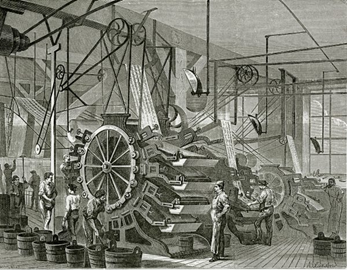The era of digital printing for wallpaper
- WallDreamer
- Latest wallpaper trends
- 1249 views


Embrace the wild and majestic side of the Wild Life panoramic wallpaper by WallDreamer
The undeniable advantages of digital printing for wallpaper
Digital printing has opened up exciting new prospects for wallpaper, bringing with it a series of undeniable advantages.
Thanks to digital printing, it is now possible to create larger strips of wallpaper. The use of non-woven, a tear-resistant material, even makes it possible to consider strips up to 1 metre wide, as opposed to the standard width of 53 centimetres. This means fewer seams are needed on the walls.
We can also offer customised production, as one of the major advantages of digital printing is its ability to produce small runs quickly and efficiently. This means that wallpaper production can be adjusted according to actual demand, reducing waste and excess stock.
Leaving the door open to infinite customisation, digital printing means that every design can be modified and adapted, allowing every space to create its own unique ambience and style. Whether for hotels, private residences, offices or restaurants, each location can reflect its own distinct personality.
The end of compulsory repetitive patterns
The digital printing breaks the constraint of repetitive patterns. It is now possible to design panoramic decors made up of a succession of strips, created from drawings, illustrations or even photographs. This flexibility expands the creative possibilities for each project and redefines the limits of traditional wallpaper, offering advantages such as larger dimensions, complete customisation and adapted production. This opens up a world of creativity for every space, whether it's your living room, your bedroom, or even your kids' room.
A look back at the history of wallpaper in the 21st century: the era of digital printing
Wallpaper, once considered obsolete, has made a remarkable comeback and is now at the top of the trend for personalised décor. A key factor in this revival is digital printing, which allows us to create custom designs and sizes to suit our desires.
The history of wallpaper began in the 1830s with the introduction of mechanical wallpapers. This marked a radical change thanks to the use of repetitive patterns produced mechanically. Production costs fell considerably, and wallpaper became widely available.

Renaissance and growth
In France alone, over 100 million rolls of wallpaper were sold in the 1970s. However, this wallcovering ended up suffering from an old-fashioned image, giving way to paintings on the wall decoration market. However, its revival came around 2000, thanks to two major innovations: digital printing and non-woven wallpaper.
Since 2015, the wallpaper market has grown by leaps and bounds, with almost 30 million rolls sold in 2016 alone. The paper imitations and graphic patterns that marked the 1990s are back in vogue. Digital printing has breathed new life into the wallpaper market, giving it a remarkable renaissance.


.jpg)








.png)


.png)
.png)
